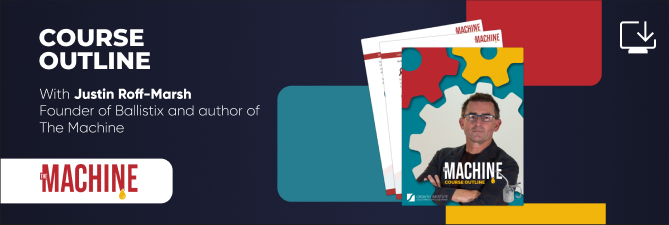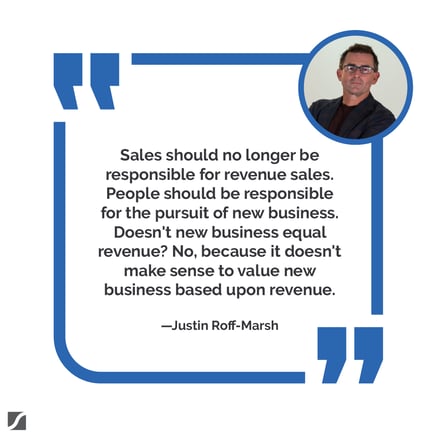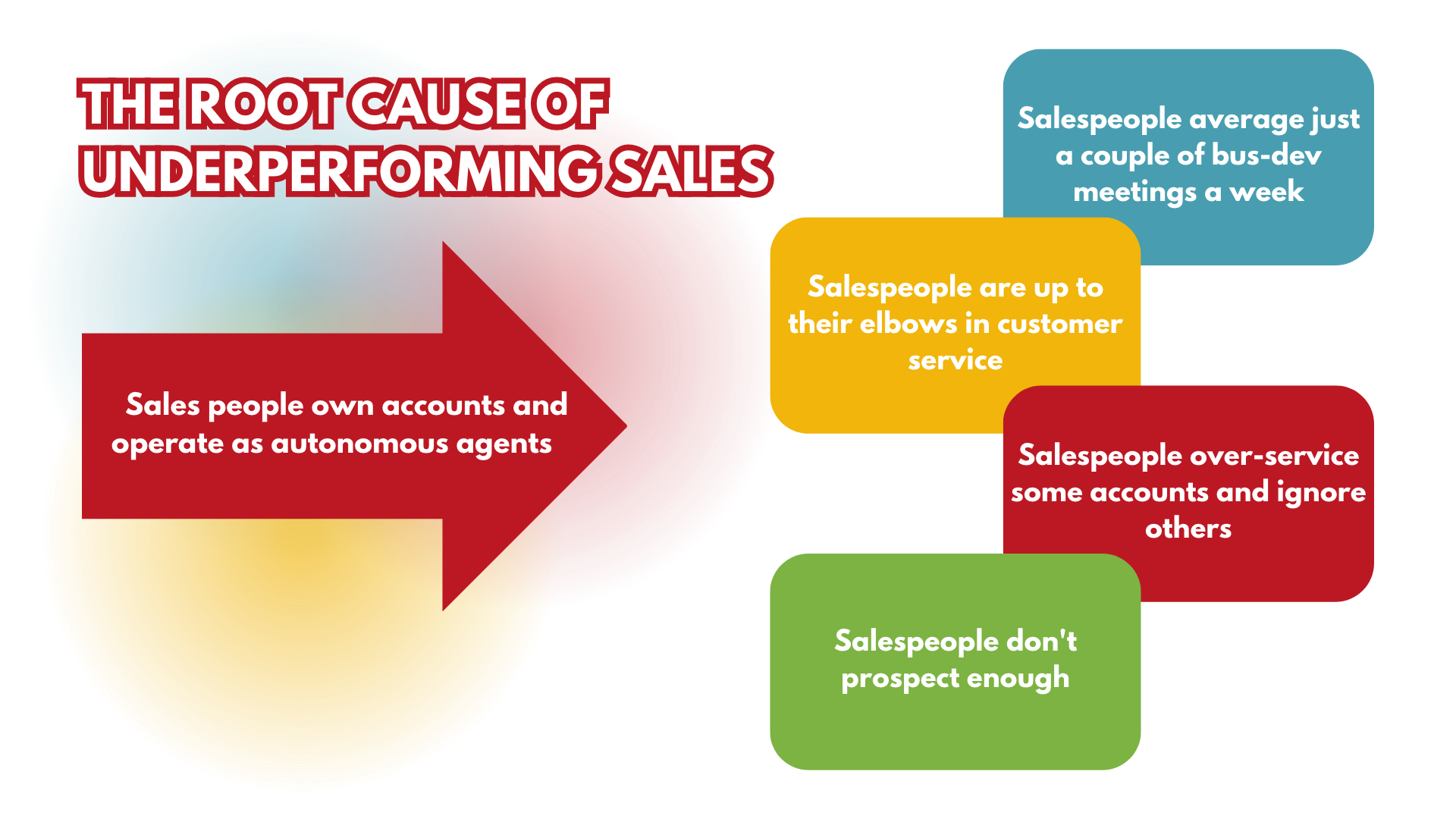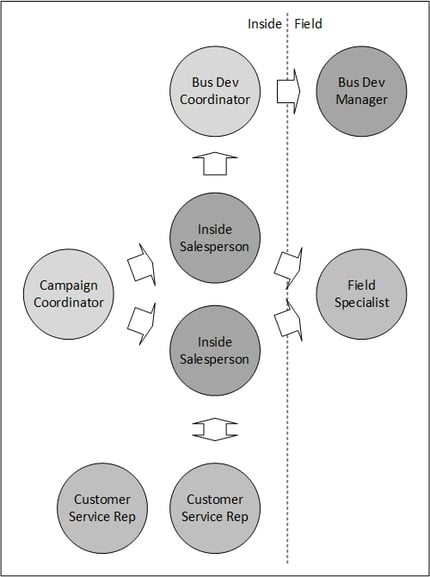Leverage Sales Force Effectiveness Through The Machine Methodology
-4.png)
It’s no secret sales force effectiveness has always been a crucial aspect of business success. And now, as we operate in an increasingly competitive landscape, it's essential to explore innovative strategies to boost sales performance.
So, where does sales ineffectiveness come from?
As worldwide author Caryn Kopp explains in "How To Fix the Right Sales Problem", too often busy executives do not have (or make) the necessary time to diagnose and pinpoint the exact problem they’re facing.
Salespeople underperformance may not always be a sales issue. Instead, it could be a pricing or product offering problem. Processes can also contribute to poor sales performance. Or perhaps the cost to sell directly to specific customer segments is too high.
In this article, we’ll address one of the most innovative strategies on the market.
In "The Machine: A Radical Approach to the Design of the Sales Function," Justin Roff Marsh provides a comprehensive blueprint to revolutionize sales force effectiveness using a very out-of-the-box approach.
Let’s dive into it…
Understanding The Machine Methodology
First, let’s discuss the core principles of The Machine methodology.
Roff-Marsh's methodology is based on the premise that the traditional sales model is inherently flawed. Justin argues that a radical redesign of the sales function is necessary for organizations to thrive in today's competitive market.
At the heart of The Machine Methodology is the division of labor within the salesforce.
He believes separating prospecting, selling, and account management functions can lead to increased efficiency and effectiveness.
By allowing each team member to focus on their specific area of expertise, organizations can optimize their sales processes and achieve better results.
Separating Prospecting and Selling
What exactly does it mean?
Roff-Marsh believes salespeople often spend too much time on low-value prospecting activities and not enough time on high-value selling tasks. Research from Harvard Business Review found that only 17% of existing sales employees score high on the competencies required for success in insight selling. One more good reason to consider Justin's approach of separating these functions, so that organizations can improve their sales force effectiveness.
However, Justin holds a critical perspective on the role of Sales Development Representatives (SDRs) within this framework. While advocating for division of labor, Roff-Marsh expresses reservations about the SDR model, citing two main reasons for his skepticism.
Firstly, Roff-Marsh argues that entrusting junior salespeople, such as SDRs, with the task of qualifying prospects can be counterproductive. He suggests that valuable prospects may find the qualifying questions posed by junior salespeople insulting and may require more technical expertise in their initial interactions. Secondly, Roff-Marsh warns against the untargeted approach that often results from SDRs churning through hundreds of prospects, potentially missing out on valuable opportunities for targeted engagement.
Roff-Marsh challenges the notion that sales can be qualified into existence, emphasizing the importance of convincing and selling to prospects rather than simply filtering them based on predetermined criteria. He advocates for experienced and capable salespeople to lead the critical initial conversations with potential customers, rather than delegating this task to SDRs. Roff-Marsh suggests that with targeted research and careful consideration, it is possible to differentiate between prospects and non-prospects without relying on the traditional SDR model.
Let’s move on to another critical component of The Machine Methodology…
Account Management
In addition to separating prospecting and selling, Roff Marsh's Machine Methodology emphasizes the importance of account management. This function is responsible for nurturing and expanding relationships with existing customers, ensuring long-term customer satisfaction and loyalty.
The Role of Account Managers
Account Managers are responsible for maintaining and growing relationships with existing customers.
They focus on addressing customer needs, resolving issues, and identifying opportunities for upselling and cross-selling. By dedicating resources to account management, organizations can ensure that they retain their customer base and maximize the lifetime value of each customer.
What are the other benefits of Implementing Account Management, according to Marsh?
- Increased customer retention: Account Managers can help maintain strong relationships with customers, reducing churn and increasing customer lifetime value.
- Upselling and cross-selling opportunities: Dedicated Account Managers can identify opportunities to sell additional products or services to existing customers, driving revenue growth.
- Improved customer satisfaction: By providing ongoing support and addressing customer needs, Account Managers can contribute to higher levels of customer satisfaction.
Let’s discuss one more change that Roff-Marsh suggests:
Shifting Prospecting Activities to Marketing
Roff-Marsh suggests moving prospecting activities to the marketing department and rebranding them as "opportunity generation" or "lead generation." This shift allows marketing teams to focus on generating new business opportunities while enabling sales teams to concentrate on closing deals.
What are the benefits of shifting activities to the marketing department?
Increase Customer Service Efficiency
Roff-Marsh recommends combining customer service representatives into one team and allocating them to product lines or territories to improve customer service efficiency. This approach allows for better collaboration and streamlined communication, resulting in more effective customer service.
Foster Tight Collaboration Between Sales and Marketing
Organizations can ensure that opportunities are more effectively generated and capitalized upon by fostering tight collaboration between sales and marketing departments.
This collaboration helps prevent the mistake of loose coupling, which is often seen when sales and marketing departments operate independently.
As Jack Daly's 7 Key Systems To Build A World-Class Sales Team, marketing and business development must be done concurrently to maximize the number of prospects, customers, and clients your company attracts.
Marketing's Role in Replenishing Opportunities
The primary job of marketing teams, according to Roff-Marsh, is to replenish salespeople's opportunities so that they never run out. This approach ensures that sales teams are continuously supplied with new leads, enabling them to maintain their focus on closing deals.
Utilize Field Specialists for Technical Activities
Field specialists should be employed for technical activities in pursuit of new business. These specialists can provide the necessary expertise and support to help sales teams navigate complex deals and close them more effectively. Indeed, if your salespeople mix face-to-face and phone selling, they will average around 15 selling conversations a week. If you move them inside, they will average around 15 selling conversations a day. That’s a 5x increase in activity level.
Define Opportunities as Competitive Customers
Opportunities should be defined as competitive customers to ensure sales teams target the right prospects. By focusing on customers most likely to convert, sales teams can increase their chances of success.
Inbound Marketing Tactics and Diminishing Returns
While inbound marketing tactics can be effective, organizations should be aware of the diminishing returns associated with these strategies. As returns diminish, companies may be tempted to spam their lists, ultimately harming their reputation and customer relationships. Instead, a combination of inbound and outbound opportunities should be pursued.
Generating Outbound Opportunities
Roff-Marsh proposes a three-step process for generating outbound opportunities:
- Identifying a market segment with unique requirements
- Developing a compelling proposition
- Investing time in refining

So this is a small taste of what Justin Roff-Marsh’s Machine Methodology is all about.
Justin's methodology is incredibly unique and goes against how most organizations set up their sales function. However, it’s highly effective and has gained a lot of positive press. Hopefully, you got a lot of value from this article and took away some pointers from Justin's approach that can help you boost your sales force's effectiveness.
One last thing...
If you want some help making these changes in your business and are interested in exploring Roff Marsh’s methodology deeper, the Machine Master Business Course is a brand new course we offer at Growth Institute.
Over 7 transformational weeks, Justin takes students by the hand and walks them step by step through this proven methodology that's been boosting sales force effectiveness and driving explosive growth for companies worldwide.
Justin assures that those who work with him will transform their sales team’s performance and change how they think about their business — forever.
If you want some help making these changes in your business and are interested in exploring Roff Marsh’s methodology deeper, you can download the course outline.
Click below for all the details.
Other recommended readings on the same topic:
- The new paradigm of selling
- Ask the right questions
- Win every rfp
- 7 reasons salespeople underperform, so coach them








